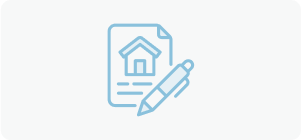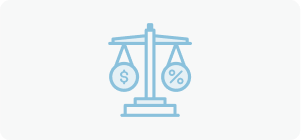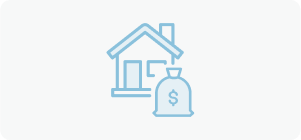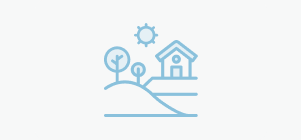Utah Conventional Mortgage Rates: Apply Today


As of October 17, 2025, the rates in Utah are 5.75% (5.879% APR) for a 30-year fixed rate mortgage and 5.125% (5.125% APR) for a 15-year fixed-rate loan.
Talk to a Conventional Loan Officer – 801-501-7950
If you’re preparing to buy a home in Utah within the next three to 12 months, you’re likely considering what your potential mortgage loan options might be. Homebuyers have several available mortgage loan options from which to choose based on their unique needs.
While government-backed mortgages such as those backed by the Federal Housing Administration (FHA), the Department of Veterans Affairs (VA), and the U.S. Department of Agriculture (USDA) might have easier qualification standards, conventional mortgage loans are the most popular type.
According to data from the U.S. Census Bureau, 76% of the 644,000 new homes sold in the U.S. in 2022 were financed through conventional mortgages.
Conventional mortgages are not backed by the government and are offered by private lenders. For this reason, they have more stringent eligibility criteria.
Conventional mortgages can be conforming or non-conforming loans. Conforming conventional mortgages are those that conform to the loan limits established by the Federal Housing Finance Agency (FHFA) and are adjusted each year. The conforming limits are maximum conforming loan amounts based on the county in which a home is located.
Lenders can sell eligible conforming loans to Fannie Mae and Freddie Mac, which form the secondary market for mortgage loans. Here’s a guide to Utah conventional mortgages from the professionals at City Creek Mortgage.
↓ Try Our Utah Conventional Mortgage Calculator ↓
Conventional Loans vs. Government-Backed Loans
Unlike government-backed loans, conventional mortgages are offered by private lenders and are not guaranteed by a federal agency. Because of this, the qualifying criteria for conventional mortgages are often more stringent than for government-backed mortgages. Lenders typically require higher credit scores and lower debt-to-income ratios than what might be required to qualify for government-backed loans.
The most popular types of government-backed loans include:
- FHA mortgages – Mortgage loans insured by the Federal Housing Administration and have lower qualifying credit scores than conventional mortgages
- VA mortgages – Mortgage loans backed by the U.S. Department of Veterans Affairs for veterans, military service members, and their spouses
- USDA mortgages – Mortgage loans guaranteed by the U.S. Department of Agriculture for low- and moderate-income borrowers to purchase homes in designated rural areas
We’ll compare and contrast conventional mortgages with each of these types of government-backed mortgages below.
Conventional vs. FHA Loan: Which Is the Better Option?
As long as you meet the qualifying eligibility criteria for a conventional mortgage, it is nearly always the better option.
There are 2 main advantages that conventional mortgages have over FHA mortgages.
- Conventional rates are lower than FHA rates.
- With conventional mortgages, you can remove the private mortgage insurance, or never pay it in the first place–if you can put 20% down on a home with a conventional mortgage, you won’t have to carry private mortgage insurance (PMI).
If you do put down less than 20%, you can ask to cancel your private mortgage insurance once you have 20% equity in your home. If you don’t request cancellation of your PMI when you’ve reached a loan-to-value (LTV) ratio of 80%, your loan servicer will automatically cancel it when you reach a 78% LTV ratio.
Conventional mortgages allow qualifying buyers to purchase primary residences, second homes, vacation property, or investment property. FHA mortgages can only be used to purchase a home that you will use as a primary residence.
FHA loans are backed by the FHA and have lower qualifying credit scores. They also allow buyers to have higher debt-to-income (DTI) ratios and require down payments of as low as 3.5%.
If you get an FHA loan, you will be required to carry FHA mortgage insurance for a minimum of 11 years with a down payment of 10% or more. If your down payment is less than 10%, you’ll be required to carry FHA mortgage insurance for the entire life of your loan regardless of how much equity you have in your house. Because of this, conventional mortgages tend to cost less than FHA loans.
Here’s a comparison chart of conventional mortgages vs. FHA loans:
| Conventional Mortgage | FHA Loan |
| Requires higher credit scores | Accepts lower credit scores |
| Can avoid PMI with a 20% down payment or cancel when you reach an 80% LTV ratio | Mandatory FHA mortgage insurance |
| Lower DTI required | Higher DTI might be allowed |
| Not federally guaranteed | Backed by the FHA |
| Minimum downpayment of 3% to 5% | Minimum down payment of at least 3.5% |
| Can use on a primary home, second home, investment property, or vacation property
No mortgage insurance premium required |
Can only be used on owner-occupied primary residence
Requires an additional upfront Mortgage insurance premium fee |
Going Rural? Conventional vs Rural Loan (USDA) – Which Is Better?
USDA loans are guaranteed by the U.S. Department of Agriculture in the event of default. They can be used to purchase homes in designated rural areas.
These loans have income limits before you can qualify. Your income can’t exceed 115% of the median income in your area. The income limit for a USDA-backed mortgage applies to all adults living in the home, including anyone who lives there but is not on the mortgage. If your household income exceeds 115% of the median income in your county, you won’t be eligible for a USDA loan.
For automated approval, you will need a minimum credit score of 640 for a USDA loan. If your score is between 600 and 639, your USDA loan application will have to go through manual underwriting and might not be approved.
A key benefit of a USDA loan is that you won’t have to make a down payment, which can make it an attractive option for income-qualified homebuyers in rural areas.
Instead of mortgage insurance, USDA loans require a guarantee fee that has a similar function of guaranteeing the loan. It is broken into two parts, including an upfront fee of 1% and annual fees of 0.35% of your loan balance. Both the upfront and annual fees can be rolled into the loan.
Here’s a quick comparison chart of conventional vs. USDA loans:
| Conventional Mortgage | USDA mortgage |
| Minimum credit score of 620 from most lenders, but higher scores can get better interest rates | Minimum credit score of 640 for automated approval |
| Home can be located anywhere in Utah | Home must be located in an eligible rural area |
| Minimum downpayment ranging from 3% to 5% | No down payment required – 0% |
| No maximum income limits | Household income limit of no more than 115% of the median income in the area |
| PMI required until you reach an LTV ratio of 80% | No mortgage insurance, but requires payment of a guarantee fee |
| Can be used to purchase a primary residence, second home, vacation home, or investment property | Can only be used to purchase an owner-occupied primary residence |
Conventional Mortgage vs. VA-Backed Loan
If you are a veteran, military service member, or surviving spouse, you might be eligible for a VA-backed mortgage. These mortgages are backed by the U.S. Department of Veterans Affairs.
VA loans can be attractive to military service members, veterans, and surviving family members because they have no down payment requirements. They also have competitive interest rates to conventional mortgages and do not require mortgage insurance.
While the VA doesn’t set a minimum qualifying credit score, lenders are allowed to set their own limits. Most lenders require credit scores of around 620 for a VA loan.
Finally, VA loans require a funding fee that serves to guarantee the loan. This funding fee varies from 1% to 3.6% of your loan amount based on your down payment.
Here’s a simple comparison chart of conventional mortgages vs. VA-backed loans:
| Conventional Mortgage | VA Loan |
| No special eligibility requirements | Only veterans, military service members, and surviving spouses are eligible |
| PMI required for down payments of less than 20% | No required down payment but will have to pay a funding fee ranging from 1% to 3.6% of the loan amount based on the down payment made |
| Minimum credit score of 620 | Credit score requirements vary based on lenders but average around 620 |
| Conforming loans must meet the conforming loan limits for the county | No maximum loan limits |
| Can be used to purchase a primary residence, vacation home, second home, or investment property | Can only be used to purchase an owner-occupied primary residence |
What Are Conventional Rehab Loans?
Conventional rehab loans are conventional loan products that allow homebuyers to obtain a single loan product to purchase a home and complete renovations.
Both Fannie Mae and Freddie Mac offer conventional rehab loans, called the homestyle renovation mortgage and the choice renovation loan, respectively.
Fannie Mae Homestyle Rehab Loan
The Fannie Mae Homestyle rehab loan is a flexible mortgage product that allows buyers to borrow enough to purchase a home and make improvements with a single primary mortgage loan product. This means the homebuyer will only have to pay closing costs once instead of paying them a second time to secure a home improvement loan.
Under the requirements, the renovations must be approved and can’t exceed 75% of the purchase price of the home plus the renovation costs or the appraised value following construction, whichever is lower.
The Fannie Mae homestyle loan can also be used to make outdoor improvements, including landscaping, pools, and patios.
Freddie Mac CHOICE Renovation rehab loan
The Freddie Mac CHOICE Renovation rehab loan can be used to purchase and renovate second homes, investment properties, and multi-unit residences. It requires a minimum down payment of 3.5% and lower DTIs and credit scores.
Restrictions might apply based on your location. To receive credits towards the down payment, borrowers are allowed to complete repairs while the property is under contract up to closing.
How to Get the Most out of a Conventional Loan
If you want to get the most out of a conventional loan, follow these tips:
1. Work to Improve Your Credit to Obtain a Higher Score
While you might be approved for a conventional mortgage with a minimum credit score of 620, you’ll need a higher credit score to qualify for the most competitive interest rates.
Aim to get to a credit score of 740 or above for the best rates. If you have a high credit score and a low-interest rate, the cost of your loan will be much lower.
2. Talk with your loan officer about 20% down, it may not be your best option.
If you can put 20% down, you can avoid PMI and save on your monthly payment, however, mortgage insurance is much more affordable than it was in the past. So it may be more advantageous to pay points and buy your rate down instead of putting the entire 20% down.
Either way, it’s best to speak with your loan officer to get numbers on what each option looks like.
3. Choose the Loan Term for your goals
If you get a fixed-rate mortgage and choose a shorter loan term, you’ll save on interest over the life of your loan, but your monthly payment will be higher. Many people who choose 15 year loans end up refinancing back to a 30 year loan to get more monthly flexibility.
What You’ll Need to Apply for a Conventional Mortgage in Utah
You’ll need to gather the following information and documents to apply for a conventional mortgage in Utah:
- Social Security number
- Residential addresses for the past two years
- Employer names and addresses for the past two years
- Current gross monthly salary
- Tax returns for the past two years
- Pay stubs for the last 30 days
- Names, addresses, account numbers, and balances on all checking/savings and other open accounts
- Addresses and loan information of other real estate owned, if applicable
- The estimated value of furniture and personal property
- W2s for the past two years
- For self-employed individuals, provide a current income statement and balance sheet
2024 Conventional Loan Limits by County in Utah
The 2024 conforming loan limits by Utah County can be found in the table below:
County One Unit Two Unit Three Unit Four Unit Beaver County $766,550 $981,500 $1,186,350 $1,474,400 Box Elder County $766,550 $981,500 $1,186,350 $1,474,400 Cache County $766,550 $981,500 $1,186,350 $1,474,400 Carbon County $766,550 $981,500 $1,186,350 $1,474,400 Daggett County $766,550 $981,500 $1,186,350 $1,474,400 Davis County $766,550 $981,500 $1,186,350 $1,474,400 Duchesne County $766,550 $981,500 $1,186,350 $1,474,400 Emery County $766,550 $981,500 $1,186,350 $1,474,400 Garfield County $766,550 $981,500 $1,186,350 $1,474,400 Grand County $766,550 $981,500 $1,186,350 $1,474,400 Iron County $766,550 $981,500 $1,186,350 $1,474,400 Juab County $766,550 $981,500 $1,186,350 $1,474,400 Kane County $766,550 $981,500 $1,186,350 $1,474,400 Millard County $766,550 $981,500 $1,186,350 $1,474,400 Morgan County $766,550 $981,500 $1,186,350 $1,474,400 Piute County $766,550 $981,500 $1,186,350 $1,474,400 Rich County $766,550 $981,500 $1,186,350 $1,474,400 Salt Lake County $766,550 $981,500 $1,186,350 $1,474,400 San Juan County $766,550 $981,500 $1,186,350 $1,474,400 Sanpete County $766,550 $981,500 $1,186,350 $1,474,400 Sevier County $766,550 $981,500 $1,186,350 $1,474,400 Summit County $1,149,825 $1,472,250 $1,779,525 $2,211,600 Tooele County $766,550 $981,500 $1,186,350 $1,474,400 Uintah County $766,550 $981,500 $1,186,350 $1,474,400 Utah County $766,550 $981,500 $1,186,350 $1,474,400 Wasatch County $1,149,825 $1,472,250 $1,779,525 $2,211,600 Washington County $766,550 $981,500 $1,186,350 $1,474,400 Wayne County $997,050 $1,276,400 $1,542,900 $1,917,450 Weber County $766,550 $981,500 $1,186,350 $1,474,400
In high cost areas in Utah, you can get a conventional mortgage with higher loan limits than the standard conforming loan limit of $726,200. These counties include the following as demonstrated by the table above:
- Summit
- Wasatch
- Wayne
The higher limits in these counties are called super-conforming loan limits. Super-conforming conventional loans typically offer lower interest rates than jumbo loans.
FAQs
1. What are the rules for a conventional mortgage loan in Utah?
Anyone can qualify for a conventional loan as long as they meet the following eligibility requirements:
- Have a minimum credit score of 620, but people with scores of 740 or higher will obtain the best rates
- Have a DTI of less than 36%, but some lenders will allow higher DTIs
- Be prepared to make a downpayment of at least 3% to 5%, but a higher down payment might be required for lower credit scores
- Find a property meeting the conforming or super-conforming loan limits in your county or opt for a jumbo loan instead
- Have no major adverse credit events on your credit report for the past few years, depending on the specific type (bankruptcy, foreclosure, collections, etc.)
- Pay off certain types of collection accounts
2. Can you get a conventional loan in Utah without a down payment?
If you are a first-time homebuyer, you can get a conventional loan with a down payment of as low as 3%.
Speak to the Mortgage Professionals at City Creek Mortgage
If you want to learn more about conventional mortgages or other loan options, speak to the mortgage professionals at City Creek Mortgage. We believe in full transparency and want to help you get the mortgage that meets your needs the best. Contact us today at (801) 501-7950 to learn how we can help.
Apply for a Utah Conventional Loan Here









